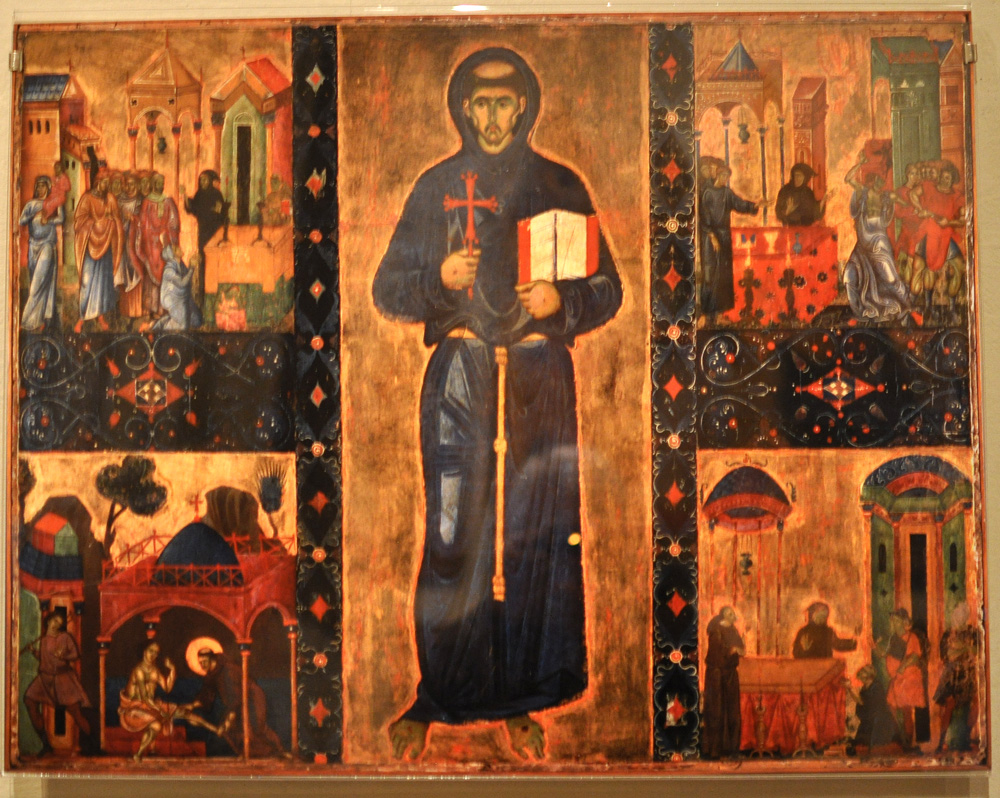Giunta Pisano, St. Francis of Assisi and Four Post-Mortem Miracles

Circa 1260-70
Tempera and gold on wood panel
Pinacoteca Vaticana, Rome
The center portrays St. Francis in the usual iconography: stigmata on his hands and feet, dark habit, cord with three knots. His right hand holds a small cross in the manner of Orthodox martyr saints, and his left holds a book. The side panels present miracles attributed to the saint after his death.
Upper left: A woman's only daughter dies. She prays, and St. Francis brings the child back to life and the mother carries her off. In the panel we see the woman praying on the right, and on the left she carries her revived daughter home on her shoulder. The man in the hood and dark habit is St. Francis. He is similarly garbed in the panels on the right.
Lower left: A man with a painful abscess on his thigh prays to St. Francis. The saint arrives and heals the sore with a small stick topped with a tau (τ).
Upper right: A cruel knight shouts, "If St. Francis be a saint, let come eighteen on the dice." Amazingly eighteen does come up, again and again. But unconvinced, the knight then cries, "If it be true that Francis be a saint, let a sword rive me through my body this day." Sure enough, his nephew takes offense and runs him through. In the panel, the knight is the man in silvery garb raising his hand to toss his dice. Right of him, the nephew draws his sword. On the left, St. Francis observes.
Lower right: I have not identified this panel.
This is the type of altarpiece known as a "dossal," a single wooden panel, usually arranged with a tall image of a saint flanked by smaller portraits or narrative images.
View this image in full resolution.
Read more about St. Francis.
Read more about medieval and Renaissance altarpieces.
Photographed at the Pinacoteca Vaticana by Richard Stracke, shared under Attribution-NonCommercial-ShareAlike license.